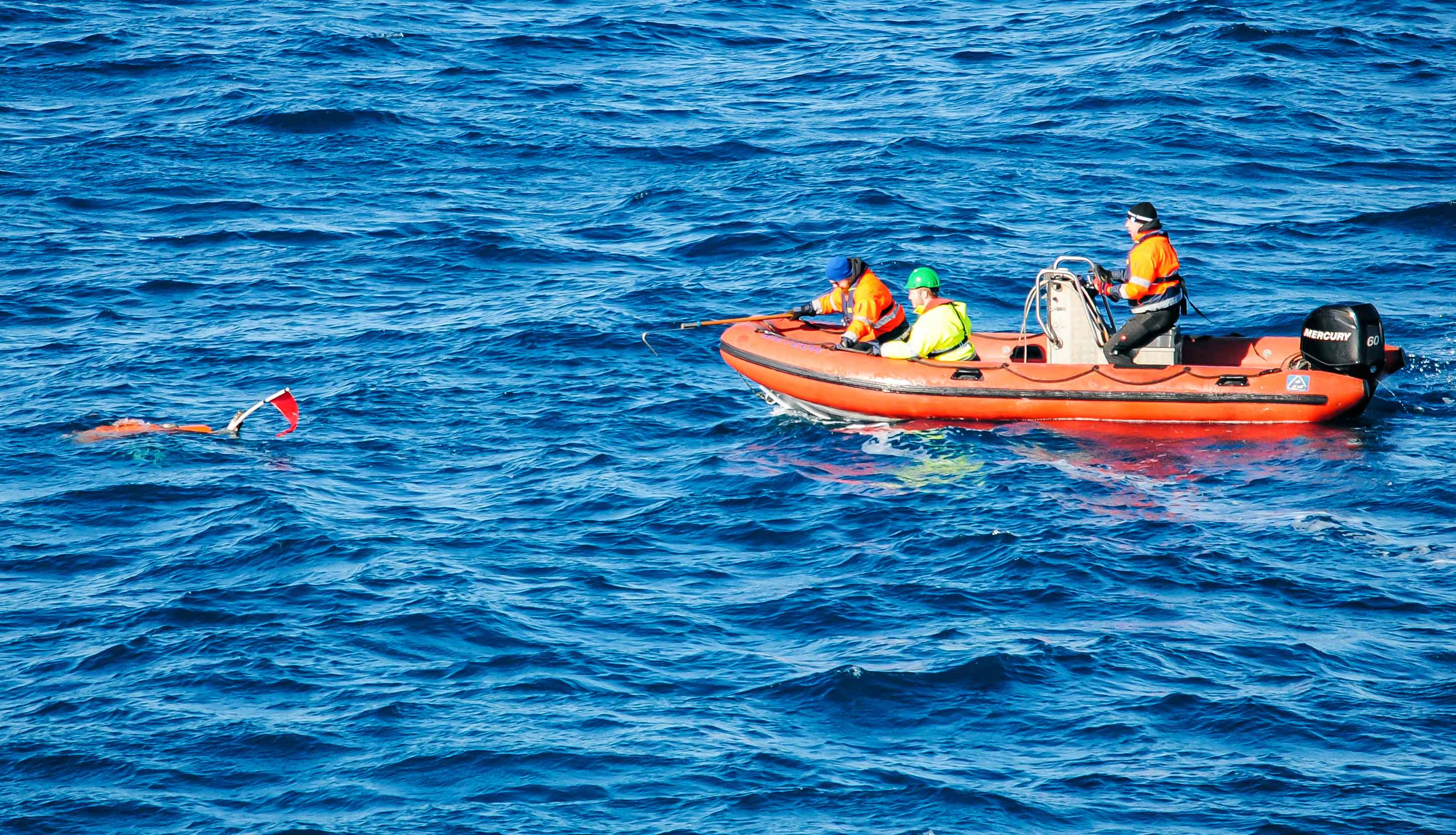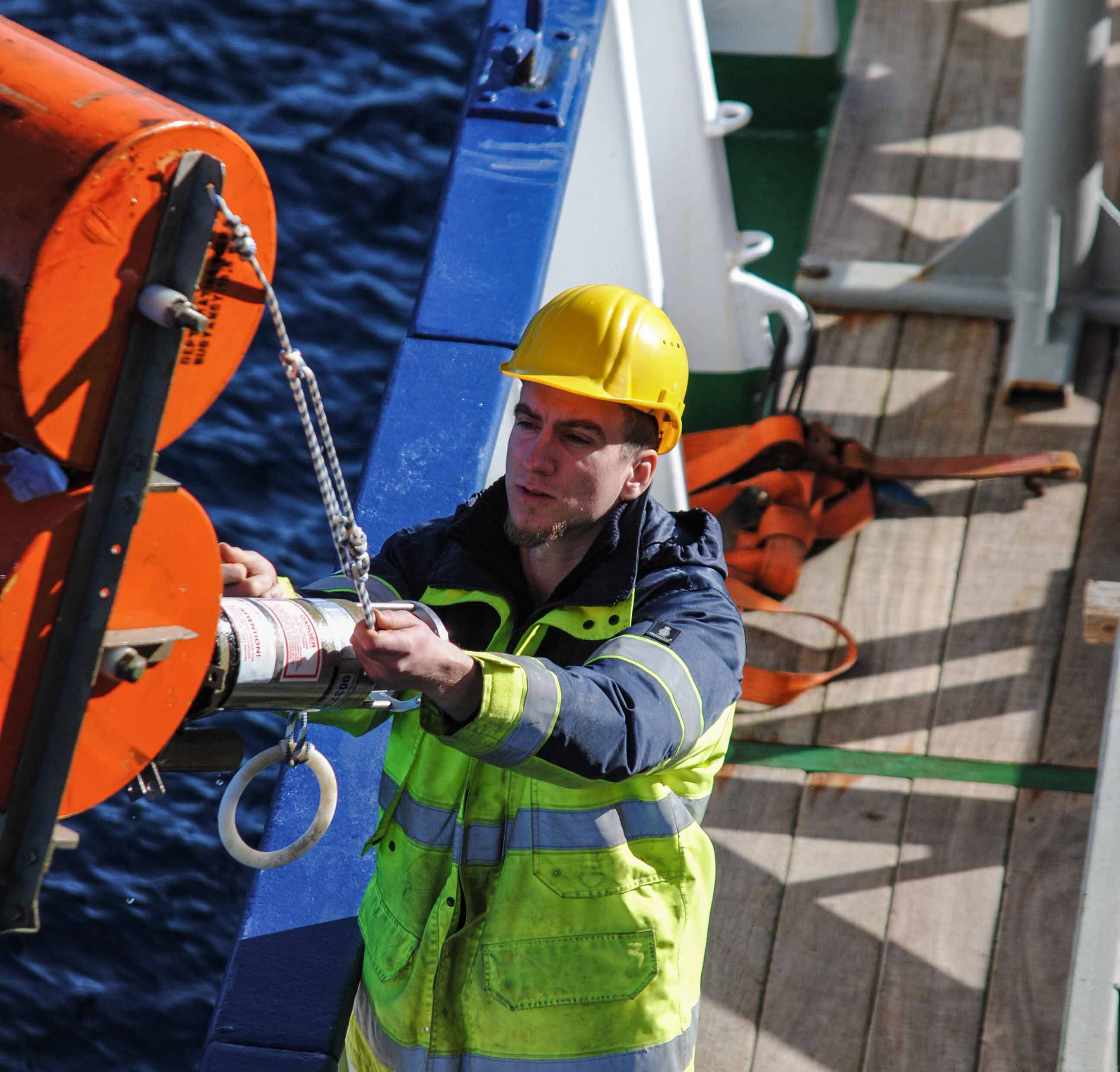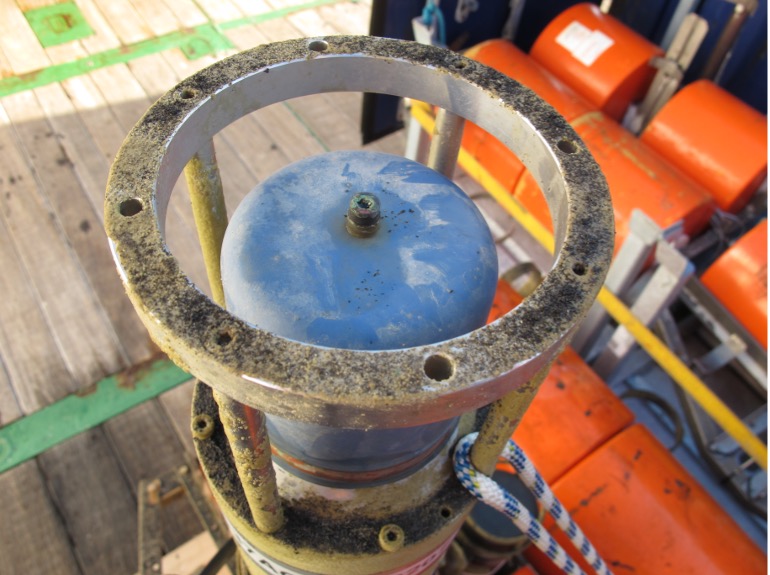Today, we, the second smallest team of expedition M178, would like to introduce our mission on this cruise. ‘Team Geodesy’ is Morelia, Florian, and Christian and we are here to service a seafloor geodetic network that measures deformation of the submarine part of Etna’s mobile flank. On land, ground deformation is usually done using GNSS (GPS) systems. These techniques are based on electromagnetic waves and communicate with satellites. But that doesn’t work underwater. Our seafloor geodetic network measures the time of flight of acoustic signals that are sent back and forth between instruments that are moored on the seafloor. With the measured speed of sound in the water, we can then convert the time of flight into distances. If the so-called acoustic distances between the instruments change, then the sea floor has moved. With a whole network of these instruments, we can get a more precise idea of how the sea floor has moved.
Our tasks here on M178 are threefold. First, we recover the instruments from the seafloor. Therefore, we send out an acoustic signal from the ship to the so-called ‘releaser’. This signal tells the releaser to open a little hook, with which the actual instrument is attached to an anchor. Once the hook is open, the instrument is lighter than water and therefore dives up to the sea surface. With their bright orange colour, an orange flag, and a flashlight they are relatively easy to spot with bare eyes from the vessel’s bridge. The vessel then moves towards the floating instruments. The crane picks it up and puts it down on the working deck.


The second task is then to dissemble the instrument, clean all parts, change batteries, read out and check quality of the data, re-configure the acquisition parameters, and assemble the instruments again. We found that actually the cleaning was the hardest and most time-consuming part of all the steps we are going through… Everything was covered by a greenish crust mixed with black particles, which we interpreted as a carbonate-ash mix. 100% natural… And in the end even the cook was involved as he provided us with the most effective cleaning agent: concentrated vinegar! And Christian is still today fighting with the pressure washer…
The final step in our work plan is the re-deployment of the readily assembled and now again shiny instruments. The difficulty here is that the instruments have to find their exact position at the seafloor – in more than 1000 m water depth! It is possible thanks to underwater positioning systems that also use the travel times of acoustic signals to calculate ranges and thus positions on the seafloor. The system we use here onboard RV METEOR is called POSIDONIA. With the help of POSIDONIA the instruments are lowered slowly on the ship’s deep-sea cable to the seafloor. When we are happy with the position, we send an acoustic command to release the instruments from the ship’s cable. The instrument stays alone at the seafloor for a couple of years.
More information on our scientific interest here: www.pre-collapse.eu
Text and Photos: Morelia Urlaub
